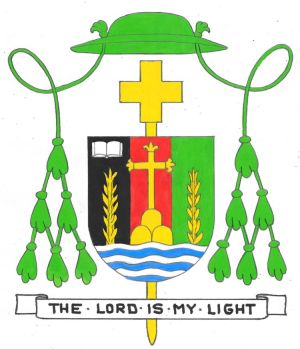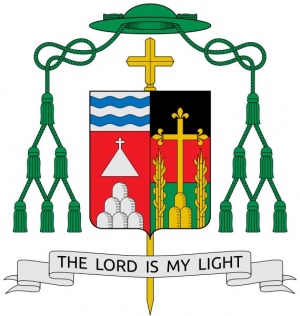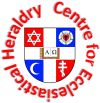James Terry Steib: Difference between revisions
Knorrepoes (talk | contribs) m (Text replacement - "{{media1}}" to "{{media}}") |
Knorrepoes (talk | contribs) m (Text replacement - "===Official blazon===↵↵" to "{| class="wikitable" |+Official blazon |- |'''English''' | blazon wanted |} ") |
||
| Line 12: | Line 12: | ||
|} | |} | ||
= | {| class="wikitable" | ||
|+Official blazon | |||
|- | |||
|'''English''' | |||
| blazon wanted | |||
|} | |||
===Origin/meaning=== | ===Origin/meaning=== | ||
As common in US episcopal heraldry, the arms show the arms of the diocese impaled with the personal arms of the bishop. | As common in US episcopal heraldry, the arms show the arms of the diocese impaled with the personal arms of the bishop. | ||
Revision as of 14:04, 1 September 2023
JAMES TERRY STEIB
Born : May 17, 1940
Deceased :
Auxiliary Bishop of Saint Louis, 1984-1993
Bishop of Memphis, 1993-2016
| Auxiliary Bishop of Saint Louis |
Bishop of |
| English | blazon wanted |
Origin/meaning
As common in US episcopal heraldry, the arms show the arms of the diocese impaled with the personal arms of the bishop.
The coat of arms of Bishop Steib combines references to his origins and endeavors with elements of the arms of his religious order and the See he serves as bishop. The background of the shield features three vertical stripes: that of the left, black; the center, red; and the right, green. This arrangement is that found on the flag of the Black Liberation Movement, which flag in turn is based on that of the nation-state of Ghana, whose independence in 1957 gave rise to the general decolonization of the African continent. The colors represent, respectively, the Black people, the blood shed in defense of Africa, and the green plains of the continent itself.
The principal charge of Bishop Steib's arms is taken from the arms of the Society of the Divine Word. These arms display a cross standing on a rocky mound, which in the arms of Bishop Steib has been modified into a heraldic trimount. The cross has been enriched by the addition of fleurs-de-lis on each of the upper extremities. The fleurs-de-lis, which like the cross and trimount are of gold , are taken from the arms of the Archdiocese of St. Louis, where they appear in a similar configuration.
The cross on its trimount is shown rising from a heraldic stylization of a body of water. This represents the Mississippi River, central to the Bishop's home state of Louisiana and the archdiocese in which he ministers in an episcopal capacity. Also rising from the water and flanking the cross are two stalks of sugar cane, likewise shown in gold. The Bishop has chosen these as a personal symbol, inasmuch as his father was a sugar cane worker and the Bishop himself worked in the sugar cane fields as a young man. By extension, this symbol serves to identify Black workers in general, to whom the Bishop is in a special sense a minister of the Gospel.
The open book, with its silver pages and blue binding, attests to the Bishop's years of service as an educator. It occupies a position of heraldic honor, seen as the upper right corner of the shield by someone bearing the shield in battle.
Bishop Steib's motto, The Lord Is My Light, demonstrates his trust in God.
The achievement is completed with the heraldic insignia of a prelate of the rank of bishop.
Religious or Ecclesiastical heraldry portal
This page is part of the Ecclesiastical heraldry portal |
Heraldry of the World |
|
Catholic heraldry
|
Other Christian churches Other religions
|
Contact and Support
Partners:
Your logo here ?
Contact us
© since 1995, Heraldry of the World, Ralf Hartemink 
Index of the site













